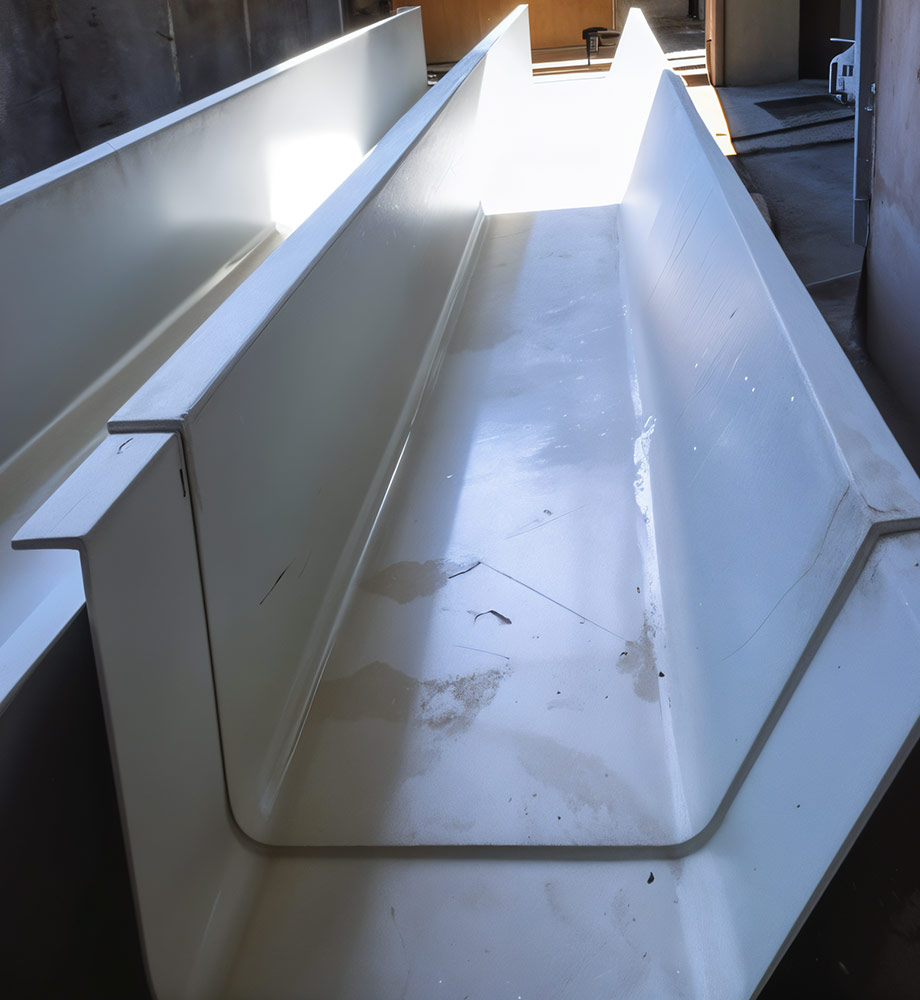Key Features
- Fiber-Glass Fabrication: High-strength FRP construction resists chemical attack.
- High Load Capacity: Reinforced lamination with internal stiffeners and flanges for rigidity.
- Custom Profiles: Flat-bottom, V-bottom, or with integrated weirs; lengths/angles as needed.
- UV & Weatherproof: Gelcoated or UV-stabilized resin for outdoor exposure.
- Low-Porosity Finish: Smooth interior prevents buildup of sludge or scale.
- Cover Options: FRP or plastic covers to reduce evaporation/algae.
Benefits
- Long Lifespan: No rusting or concrete cracking; lasts much longer in corrosive effluent service.
- Reduced Maintenance: Self-supporting structure does not require painting or cathodic protection.
- Efficient Flow: Precise fabrication ensures consistent channel flow and easy cleaning.
- Light Installation: Sections bolt together on-site, minimizing downtime.
Applications
- Clarifier Effluent Troughs: Circular or rectangular clarifier launders (weir troughs) in water plants.
- Filter Drainage: Outflow channels under pressure filters or clarifiers.
- Chemical Drains: Acid/alkali drainage in plating or chemical processing areas.
- Building Rain Gutters: In corrosive environments (e.g. chemical plants) where steel gutters would fail.
- Process Channels: Conveyors or troughs for wastewater and sludge lines.
Technical Specifications
- Thickness: Typically 6–12 mm FRP lamina, thicker at flanges (150% thickness at corners as per AWWA).
- Sizes: Custom widths (e.g. 300–1500 mm) and slope grades.
- Load Ratings: Designed per EN 1090 or local codes for walkway loads if needed.
Unique Selling Points
- Engineered Strength: Up to 50% stronger than standard panels due to multi-layer fiberglass.
- Corrosion Resistance: Handles even seawater or acids without deterioration.
- Seamless Designs: No welded joints that can fail; edges are continuously molded.
- Integration: Can be fabricated with outlets, drains, and support flanges as needed.

